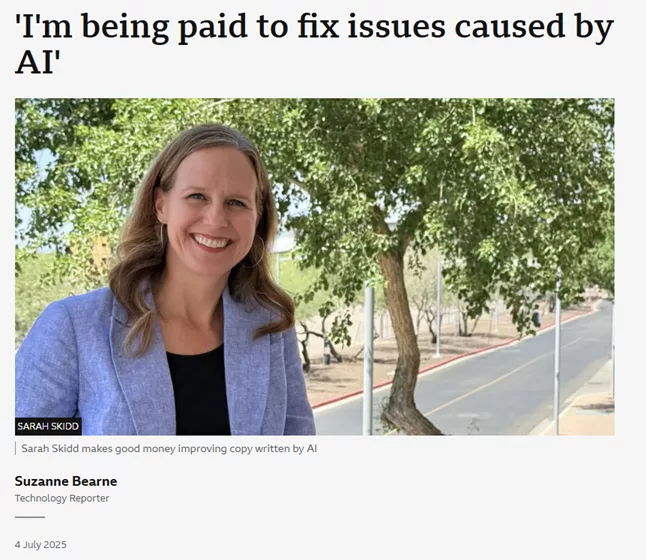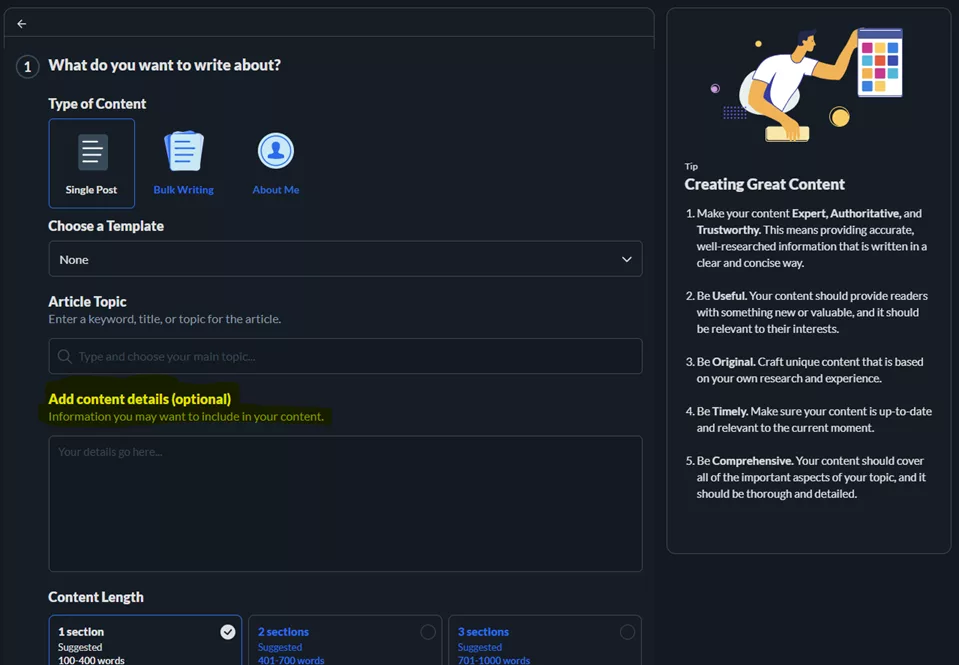A recent BBC article shone a light on an unexpected problem that many businesses are facing right now: generative AI was supposed to save money and time — but for some, it’s doing the opposite.

In the article, copywriters like Sarah Skidd and digital agency owners like Sophie Warner share real examples of companies who rushed into using AI tools like ChatGPT to write website copy or even code — only to end up with generic, uninspiring text, broken websites, or even security risks.
One copywriter said she made more money fixing AI-generated copy than writing it from scratch. Another agency spent days undoing code a client had added to their site after asking AI for “quick instructions.”
The moral of the story? Generative AI can be a powerful tool — but without meaningful human input, it often produces bland, off-brand, or even damaging results.
AI Is a Tool — Not a Magic Wand
This is something I see again and again in the world of online business and blogging. People think AI will do all the work for them — but the reality is, AI is more like a block of clay.
If you just drop clay on a table, you don’t get a beautiful vase. You get a lump of clay. The magic happens when you shape it, refine it, and add your own creativity.
Good AI-generated content works exactly the same way:
- You need to feed it context — your brand voice, target audience, style preferences, examples of what you want.
- You need to edit and add real stories, insights, or experiences that an AI simply can’t guess on its own.
- You need to test different prompts and styles — conversational, professional, regional, or age-specific — to see what connects best.
A Smarter Way: Human + AI Together
This is why I recommend platforms like Wealthy Affiliate (WA) for anyone building a blog or website. Yes, WA now has its own built-in AI writing tool — and it’s surprisingly good at generating outlines, blog posts, and even AI-generated images.
But here’s what’s better: WA’s editor encourages you to add your human touch at every step. There’s an entire section where you can expand ideas, add personal examples, or adjust the tone — yet I see so many people skip this part, thinking the AI is “done.”
The truth is, those extra sections aren’t optional — they’re essential.

When you combine your real-world experiences, brand voice, and insights with AI’s speed and structure, you get content that’s not just “good enough,” but genuinely useful and interesting. That’s the difference between content that drives traffic and trust — and content that’s just “vanilla filler,” like the businesses in the BBC article discovered the hard way.
It Takes Time Upfront — But Pays Off Fast
One final lesson: if you feel frustrated that AI isn’t saving you as much time as you hoped, it’s probably because you’re skipping the moulding stage.
Invest time upfront:
✅ Create clear brand guidelines and give them to your AI.
✅ Add real examples, stories, or case studies that make your content unique.
✅ Experiment with different styles and tones — see what clicks with your audience.
Once you’ve “trained” your approach, AI can truly help you scale your content much faster — and keep the quality high. But it will never be a magic bullet on its own.
Takeaway
Generative AI is like any good tool: it’s only as good as how you use it.
If you’re serious about building a blog or online business, you need a system that combines the speed of AI with the human insight only you have.
That’s exactly why I recommend Wealthy Affiliate — you get not just an AI writing tool, but the training, support, and real-world community to make sure your content is worth reading.
👉 Check out my full review of Wealthy Affiliate here — and learn how to build a business where AI works with you, not instead of you.